MachineLearning
Latest
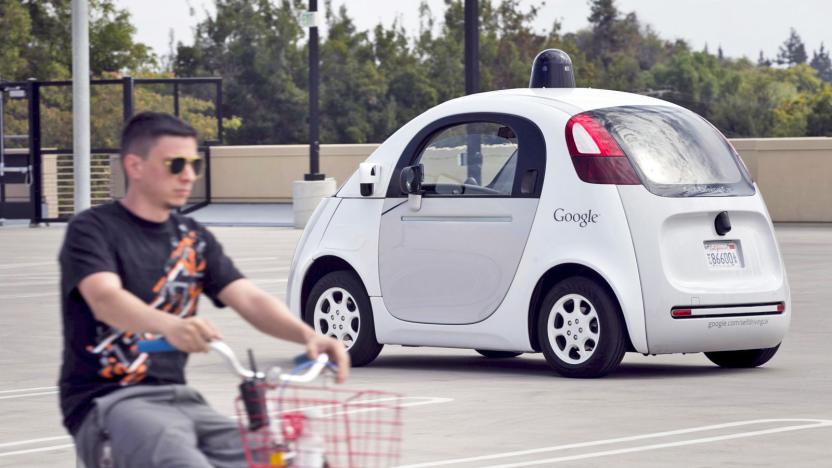
Google's self-driving cars can read cyclists' hand signals
Google is working to expand the capabilities of its self-driving vehicle fleet, and according to its latest progress report (PDF), it's making strides in sharing the road with cyclists. One of the ways the folks in Mountain View are doing that is by using onboard sensors to gauge and interpret a cyclist's intent. "Our sensors can detect a cyclist's hand signals as an indication of an intention to make a turn or shift over," the company's June autonomous vehicle report reads. "Cyclists often make hand signals far in advance of a turn, and our software is designed to remember previous signals from a rider so it can better anticipate a rider's turn down the road."

Amazon robot challenge winner counts on deep learning AI
Amazon's robot Picking Challenge is back for a second year, and it's clear that the competition has learned a lot in that time... in more ways than one. The Netherlands' TU Delft won both parts of the challenge (stowing and picking warehouse items) with a robot that relied on the combination of deep learning artificial intelligence and depth-sensing cameras to get the job done. The machine studied 3D scans of the stockroom items to help it decide how to manipulate items with its gripper and suction cup. That adaptive AI made a big difference, to put it mildly. The arm got a near-flawless score in the stowing half of the event, and was over three times faster at picking objects than last year's champion (100 per hour versus 30).
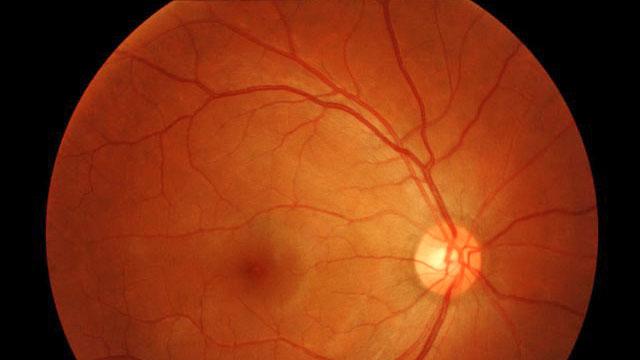
Google DeepMind will detect eye diseases with AI
Google's DeepMind division is teaming up with another part of the UK's National Health Service (NHS) to see if it can improve patient care. The artificial intelligence company, acquired by Google in 2014, will use machine learning to analyze one million anonymised eye scans supplied by the Moorfields Eye Hospital. In addition, it'll be crunching anonymous information related to patient diagnosis, age and treatment. The hope is that such an approach can be used to examine scans with greater efficiency, or with a higher degree of accuracy, than traditional methods, thereby leading to earlier detection and intervention of eye diseases.

Neural net photography tweaks go mobile with Prisma on iOS
We've seen DeepMind's acid trip photo creations and what it looks like when algorithms colorize black and white photos. But you need to be near a computer for the former, and do some pretty heavy lifting, scientifically speaking, to set up the latter. But an iOS app is putting algorithm-based photo tweaks in your pocket. Dubbed Prisma, it takes a different approach than, say, Instagram. The app's filters are artistic, in the painterly definition of the word.

Computers learn to predict high-fives and hugs
Deep learning systems can already detect objects in a given scene, including people, but they can't always make sense of what people are doing in that scene. Are they about to get friendly? MIT CSAIL's researchers might help. They've developed a machine learning algorithm that can predict when two people will high-five, hug, kiss or shake hands. The trick is to have multiple neural networks predict different visual representations of people in a scene and merge those guesses into a broader consensus. If the majority foresees a high-five based on arm motions, for example, that's the final call.
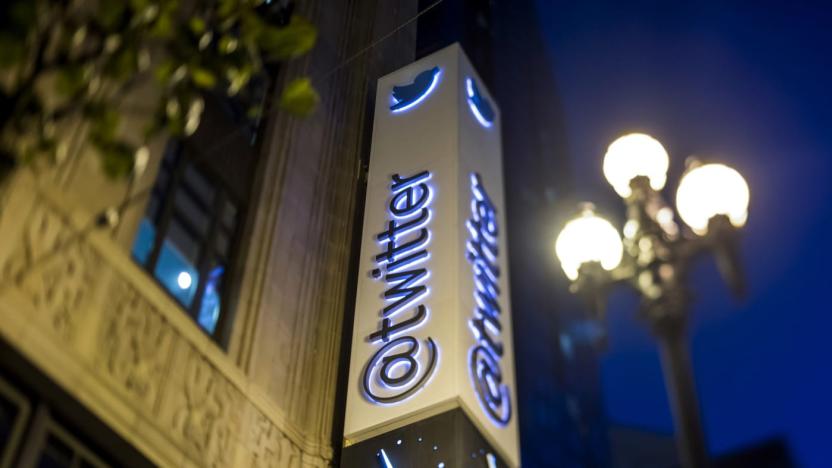
Twitter buys a machine learning company to improve your videos
Facebook isn't the only social network to see some value in artificial intelligence. Twitter has bought Magic Pony, a small London outfit that specializes in using machine learning to process visuals, at an unofficial worth of around $150 million. It's hoping to use the newly acquired talent to "enhance [its] strength" in both live and pre-recorded videos. What exactly it will do isn't clear, but Twitter chief Jack Dorsey points to Magic Pony's work on sharpening blurry video elements as an example -- it's easy to see machine learning improving the quality of clips (especially on Periscope) without consuming more of your all-important bandwidth.

Google AI learns how to play soccer with a virtual ant
Google's DeepMind has conquered some big artificial intelligence challenges in its day, such as defeating Go's world champion and navigating mazes through virtual sight. However, one of its accomplishments is decidedly unusual: it learned how to play soccer (aka football) with a digital ant. It looks cute, but it's really a profound test of DeepMind's asynchronous, reinforcement-based learning process. The AI has to not only learn how to move the ant without any prior understanding of its mechanics, but to kick the ball into a goal. Imagine if you had to learn how to run while playing your first-ever match -- that's how complex this is.
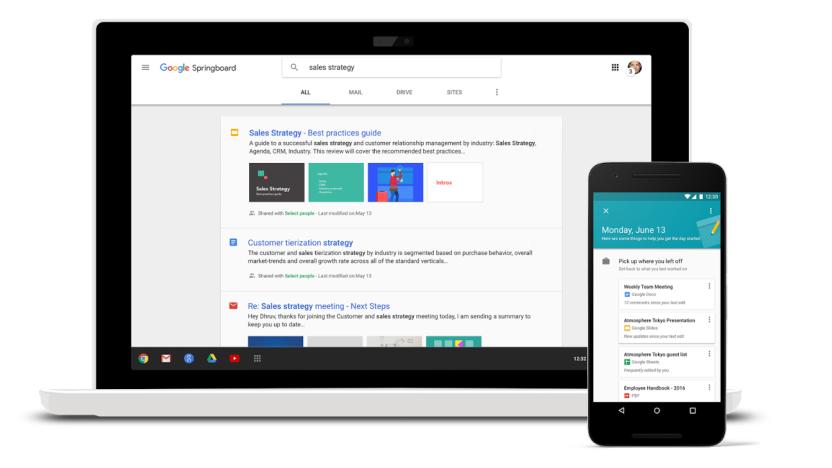
Google brings 'intelligent search' to business users
Google's new Springboard search may be aimed at companies, but it's just the kind of AI-powered tech that can trickle down to consumers. The search giant describes it as a sort of digital assistant that helps employees search through piles of documents in Gmail, Calendar, Docs, Drive, Contacts and other apps. Much like Google Now, it also "assists you throughout your workday by proactively providing useful and actionable information and recommendations," according to the company.

Apple iOS 10 uses AI to help you find photos and type faster
Apple is making artificial intelligence a big, big cornerstone of iOS 10. To start, the software uses on-device computer vision to detect both faces and objects in photos. It'll recognize a familiar friend, for instance, and can tell that there's a mountain in the background. While this is handy for tagging your shots, the feature really comes into its own when you let the AI do the hard work. There's a new Memories section in the Photos app that automatically organizes pictures based on events, people and places, complete with related memories (such as similar trips) and smart presentations. Think of it as Google Photos without having to go online.
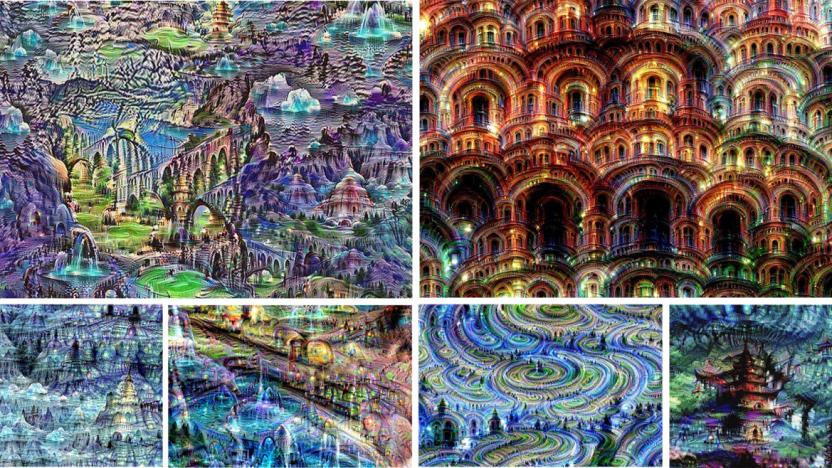
Google's new tools let anyone create art using AI
Google doesn't just want to dabble in using AI to create art -- it wants you to make that art yourself. As promised, the search giant has launched its Magenta project to give artists tools for bringing machine learning to their creations. The initial effort focuses around an open source infrastructure for producing audio and video that, ideally, heads off in unexpected directions while maintaining the better traits of human-made art.

Google built a processor just for AI
Google is no stranger to building hardware for its data centers, but it's now going so far as to design its own processors. The internet giant has revealed the Tensor Processing Unit, a custom chip built expressly for machine learning. As Google doesn't need high precision for artificial intelligence tasks, the TPU is focused more on raw operations per second than anything else: It's an "order of magnitude" faster in AI than conventional processors at similar energy levels. It's space-efficient too, fitting into the hard drive bays in data center racks.
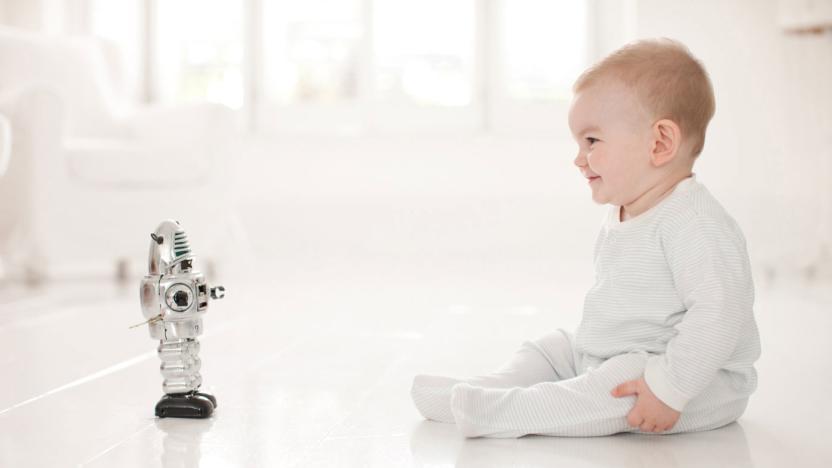
Sony wants to push AIs to learn from their own experiences
Artificial intelligence is being put through rigorous training. Major technology companies like Microsoft, Google, IBM and Amazon have invested heavily in machine learning techniques that teach systems how to think and react like humans. Now Sony is stepping in to introduce a new layer of learning that it believes will power the next generation of AIs.

Amazon opens up its product recommendation tech to all
For a company like Amazon, product recommendations are hugely important. They can be the difference between a one-off order and an unexpected spending spree. The company has spent years adapting its algorithms to produce the most relevant suggestions, but now it wants help. It's taken the wraps off DSSTNE -- its Deep Scalable Sparse Tensor Network Engine (pronounced destiny) -- and is asking for companies, researchers and developers to make its artificial intelligence framework even more powerful.
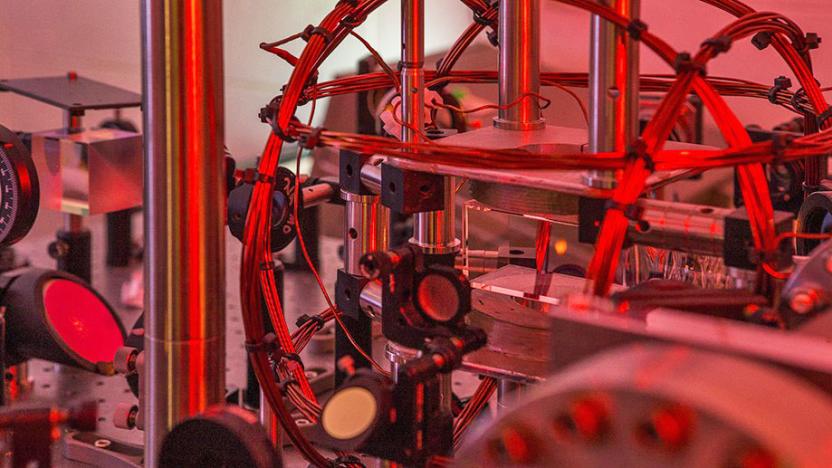
AI can recreate Nobel-Prize winning experiments
We've seen how artificial intelligence has made quantum experimentation easier, and now machine learning is being implemented in other areas of scientific experimentation. A team of researchers from the Australian National University, University of Adelaide and the University of South Wales Australian Defence Force Academy (phew) used an algorithm to recreate a Nobel Prize-winning experiment that created a Bose-Einstein condensate. In simpler terms, the physicists made ultra-cold gas (1 microkelvin, less than "a billionth of a degree above absolute zero"), and then let the AI take over the rest of the experiment.
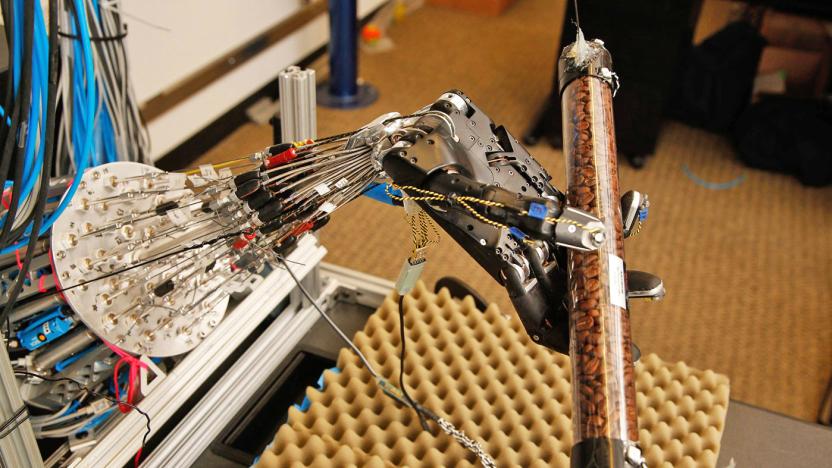
Robot hand learns to twirl objects on its own
Robots can (usually) walk or roll around just fine, but hand control has often proven elusive: it's hard to give them the same kind of finger dexterity as a human. However, University of Washington researchers just got much closer to fulfilling that dream. They've built a robot hand that is not only dextrous enough to spin objects (such as the tube of coffee beans you see above), but learns how to do this on its own. Its algorithm gradually discovers what works and what doesn't -- give it enough time and it'll go from clumsy to reasonably skilled.

Computers trump chemists by studying failed experiments
In science, the pursuit of truth requires constant experimentation and, inevitably, a few failures along the way. But that's okay, because learning from those failures is often necessary in order to uncover a new, remarkable breakthrough. Now, a team of researchers from Haverford College is trying to speed up this trial and error process with a machine-learning algorithm, capable of predicting successful chemical reactions.

Inrix Traffic app uses AI to learn your driving habits
It's been awhile since we've heard from Inrix, the company that uses OpenStreetMap and its own traffic analysis to guide you via GPS. It also supplies connected car tech to Lexus, Mercedes-Benz, Porsche and other automakers. The company just completely redesigned its iOS and Android Traffic apps, adding machine learning features, calendar integration and more. While there are tons of such apps to choose from, Inrix's app is geared toward frequent drivers who do routine trips where they often battle traffic.
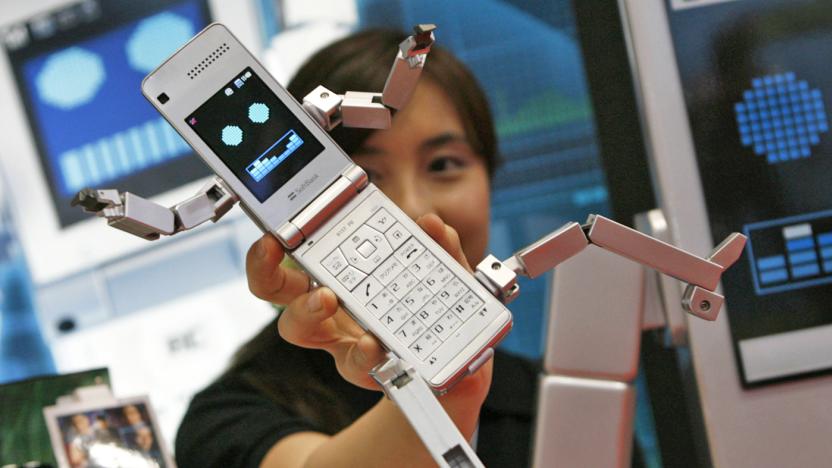
DARPA's next challenge could lead to AI-powered radios
So far, the solutions to wireless spectrum crunches have involved either offering relatively untapped airwaves or reusing frequencies that were previously assigned to something else. However, DARPA knows this can't go on forever -- and it's looking for help to devise a clever way around the problem. The military research agency has launched a new Grand Challenge that will have teams develop artificial intelligence-powered radios that cooperate with each other to avoid wireless congestion. Rather than force devices to use narrow frequency ranges regardless of how crowded they may be, DARPA would like to see those gadgets negotiate frequency sharing whenever they need it.

Microsoft grounds its AI chat bot after it learns racism
Microsoft's Tay AI is youthful beyond just its vaguely hip-sounding dialogue -- it's overly impressionable, too. The company has grounded its Twitter chat bot (that is, temporarily shutting it down) after people taught it to repeat conspiracy theories, racist views and sexist remarks. We won't echo them here, but they involved 9/11, GamerGate, Hitler, Jews, Trump and less-than-respectful portrayals of President Obama. Yeah, it was that bad. The account is visible as we write this, but the offending tweets are gone; Tay has gone to "sleep" for now.

Google DeepMind AI wins final Go match for 4-1 series win
By nabbing three straight wins to kick off a five match series, the Google DeepMind AI program AlphaGo established itself as a more than worthy adversary for legendary Go player Lee Sedol. Sedol rebounded, winning the fourth match Sunday after he pushed AlphaGo to make a mistake on move number 79. Even after the loss, AlphaGo has received an honorary "ninth-dan" rating (the same rating that Lee has earned as one of the game's top players) by South Korea's top Go federation, the Korea Baduk Association. Now, the two will square off for a fifth and final match at the Four Seasons hotel in Seoul. The match is scheduled to begin at midnight ET (you can watch the stream here or embedded below), and it will be interesting to see who maintains an edge after four games.






